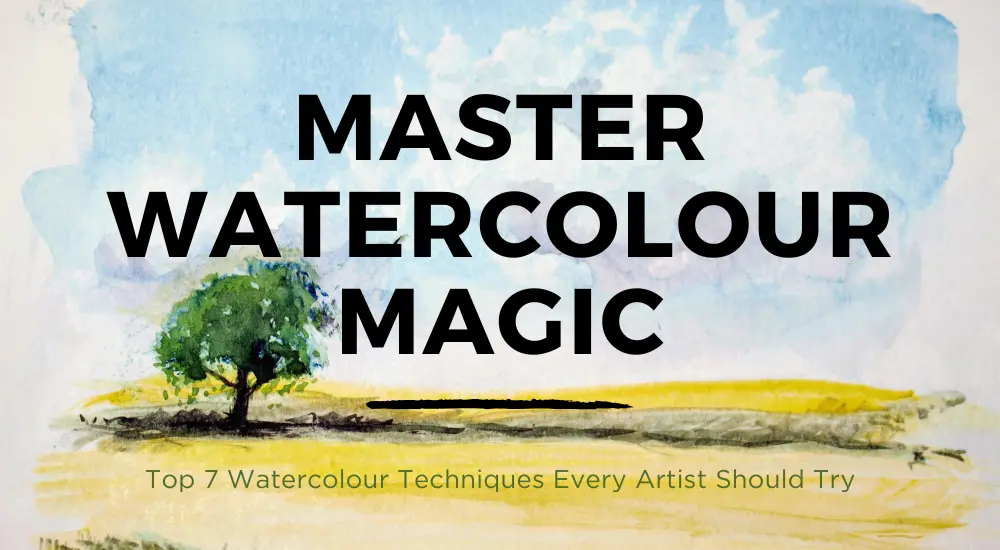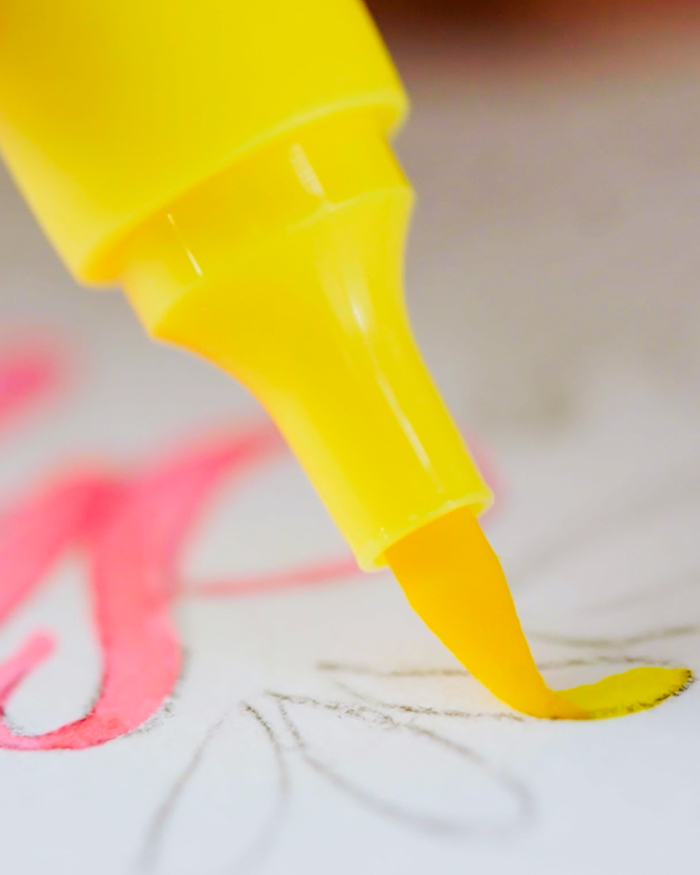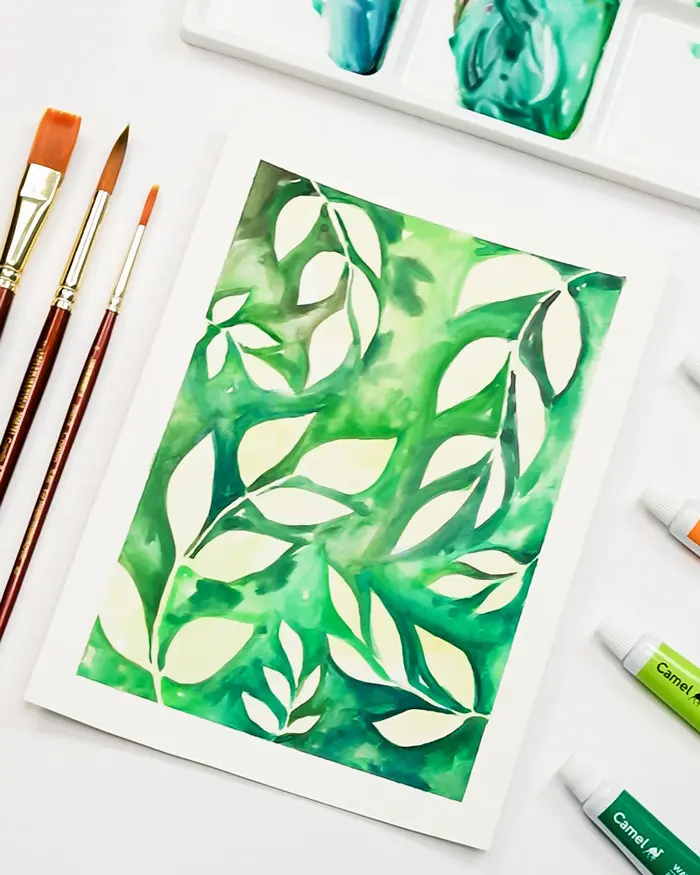Watercolour is a water-based medium for painting. Watercolours let you make soft blends and create interesting textures. This makes it popular with both new and experienced painters. To start watercolour painting, you only need a brush and white paper. As you learn, you can try different techniques to improve your skills.
In this article, we focus on the best watercolour painting techniques that every artist should master. These tips and tricks help create stunning effects and textures.
1. Wet-on-Wet Painting Technique for Soft, Blended Effects
The wet-on-wet watercolour painting technique lets you add wet paint to a wet surface. It is one of the most common and best watercolour painting techniques. This method helps colours flow and mix smoothly, creating soft edges and gentle colour shifts. It works excellently for painting things like skies, water bodies, or dreamy backgrounds. Artists love this technique when they want to create natural-looking scenes. To use this method, choose a high-quality watercolour paper that can soak up extra moisture. This helps your colours blend beautifully and stay bright.
2. Wet-on-Dry Painting for Defined Details and Precision
For sharper edges and controlled details, try the wet-on-dry technique. Here, you apply wet paint to dry paper, making it perfect for adding outlines, highlights, or layered effects. This method allows you to build depth in your artwork without smudging previous layers. This might look like an advanced watercolour painting technique but you can experiment with brushes of varying sizes. This will help you achieve both fine details and bold strokes.
3. Dry Brush Technique to Create Textured and Scratchy Effects
The dry brush technique uses little to no water. This helps create rough and scratchy textures. This is great for depicting woody grain, grass, or textured surfaces. Simply dip your brush with paint and swipe it lightly over dry paper. If you are new to this technique, experiment with Camel Watercolour Cakes. They are portable and easy to use for dry brush effects.
4. Flat Wash for Smooth and Consistent Backgrounds
A flat wash is a fundamental watercolour painting technique that involves applying a uniform layer of colour over a large area. It’s an excellent way to create consistent backgrounds or set a base layer for more intricate work. Use a larger flat brush to ensure even coverage such as the Camel Artist Brush - Flat - Series 69 (11).
5. Graded Wash for Beautiful Colour Gradients
A graded wash starts with a strong colour at one end and fades into a lighter shade of the same colour or even another colour. This technique is perfect for creating realistic skies or transitioning colours in your artwork. Start with a saturated colour and gradually dilute it with water as you move down the paper. Practice blending two colours smoothly by using watercolours on high-quality watercolour paper.
6. Salt Texture Technique for Unique, Speckled Effects
To add a touch of magic, try the salt technique. Create magical textures by sprinkling salt onto wet paint. The salt absorbs the pigment, leaving behind a unique speckled pattern. This technique works wonderfully for creating starry skies, frosty effects, or sand-like textures. Experiment with different types of salt for different patterns and remember to brush off the salt gently after the paint dries.
7. Lifting Off Paint Technique for Adding Highlights and Texture
Lift colour from a wet wash using sponges, paper towels, or brushes. This method helps you create bright highlights, fix mistakes, or add interesting textures to your art. Gently dab a damp sponge or cloth on wet paint to remove colour. This is quite an advanced watercolour painting technique, so we recommend a sturdy sketchbook with thick paper, like Camel’s 270 GSM premium sketchbooks, to ensure your artwork remains intact during this process.
Master Watercolour Techniques with Camel's Complete Painting Supplies
With watercolour paints, you can experiment and create different art effects. For example, you can create soft blends with the wet-on-wet technique or add textures with the salt painting technique. Together, these techniques will help you explore the full potential of these paints.
With different ranges of Camel Watercolour products- including Camel Artist Watercolours for professionals, and Camel Watercolours for beginners and students, you have everything you need to bring your creative vision to life. Use different brushes and high-quality sketchbooks for watercolour painting. Remember, practice makes perfect, and every experiment adds to your artistic journey. Let your creativity flow!
Did this article help you learn something new?
Share your thoughts with us in the comments below.
Leave a comment

Comment added
Comment updated
Comment deleted
More inspiration
“
“You don't choose art. Art chooses you.”




